6.1 Encoding: Transforming Perceptions into Memories
Bubbles P., a professional gambler with no formal education, who spent most of his time shooting craps at local clubs or playing high-

 Figure 6.1: Digit Memory Test How many digits can you remember? Start on the first row and cover the rows below it with a piece of paper. Study the numbers in the row for 1 second and then cover that row again. After a couple of seconds, try to repeat the numbers. Then uncover the row to see if you were correct. If so, continue down to the next row, using the same instructions, until you cannot recall all the numbers in a row. The number of digits in the last row you can remember correctly is your digit span. Bubbles P. could remember 20 random numbers, or about five rows deep. How did you do?
Figure 6.1: Digit Memory Test How many digits can you remember? Start on the first row and cover the rows below it with a piece of paper. Study the numbers in the row for 1 second and then cover that row again. After a couple of seconds, try to repeat the numbers. Then uncover the row to see if you were correct. If so, continue down to the next row, using the same instructions, until you cannot recall all the numbers in a row. The number of digits in the last row you can remember correctly is your digit span. Bubbles P. could remember 20 random numbers, or about five rows deep. How did you do?
How is making a memory like following a recipe?
How did Bubbles accomplish his astounding feats of memory? For at least 2000 years, people have thought of memory as a recording device that makes exact copies of information that comes in through our senses, and then stores those copies for later use. This idea is simple and intuitive. It is also completely incorrect. Memories are made by combining information we already have in our brains with new information that comes in through our senses. In this way memory is like cooking; starting from a recipe but improvising along the way, we add old information to new information, mix, shake, bake, and out pops a memory. Memories are constructed, not recorded, and encoding is the process by which we transform what we perceive, think, or feel into an enduring memory. Let us look at three types of encoding processes—
6.1.1 Semantic Encoding

Memories are a combination of old and new information, so the nature of any particular memory depends as much on the old information already in our memories as it does on the new information coming in through our senses. In other words, how we remember something depends on how we think about it at the time. For example, as a professional gambler, Bubbles found numbers unusually meaningful, so when he saw a string of digits, he tended to think about their meanings. He might have thought about how they related to his latest bet at the racetrack or to his winnings after a long night at the poker table. Whereas you might try to memorize the string 22061823 by saying it over and over, Bubbles would think about betting $220 at 6-
Which is most effective, semantic, rhyme, or visual judgment, and why?
In a seminal experiment, Toronto researchers Fergus Craik and Endel Tulving presented participants with a series of words and asked them to make one of three types of judgments (Craik & Tulving, 1975): semantic judgments required the participants to think about the meaning of the words (Is hat a type of clothing?); rhyme judgments required the participants to think about the sound of the words (Does hat rhyme with cat?); and visual judgments required the participants to think about the appearance of the words (Is HAT written uppercase or lowercase?). The type of judgment task influenced how participants thought about each word—
So where does this semantic encoding take place? What is going on in the brain when this type of information processing occurs? Studies reveal that semantic encoding is uniquely associated with increased activity in the lower left part of the frontal lobe and the inner part of the left temporal lobe (FIGURE 6.2a) (Demb et al., 1995; Kapur et al., 1994; Wagner et al., 1998). In fact, the amount of activity in each of these two regions during encoding is directly related to whether people later remember an item. The more activity there is in these areas, the more likely the person will remember the information.
6.1.2 Visual Imagery Encoding
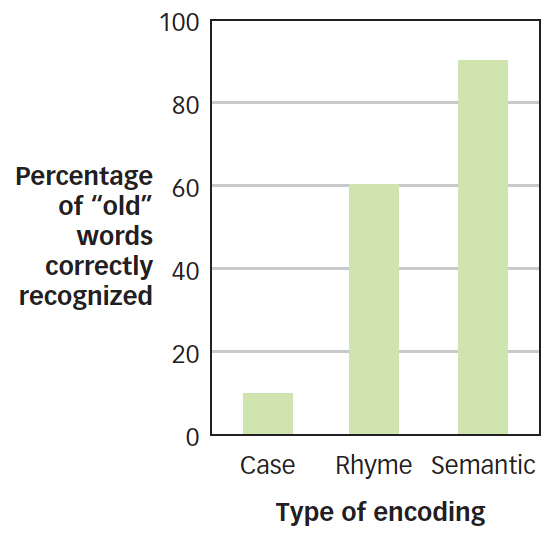
In Athens in 477 BCE, the Greek poet Simonides had just left a banquet when the ceiling collapsed and killed all the people inside. Simonides was able to name every one of the dead simply by visualizing each chair around the banquet table and recalling the person who had been sitting there. Simonides was not the first, but he was among the most proficient, to use visual imagery encoding, the process of storing new information by converting it into mental pictures.
If you wanted to use Simonides’s method to create an enduring memory, you could simply convert the information that you wanted to remember into a visual image and then store it in a familiar location. For instance, if you were going to the grocery store and wanted to remember to buy soft drinks, popcorn, and cheese dip, you could use the rooms in your house as locations and imagine your living room flooded in soft drinks, your bedroom pillows stuffed with popcorn, and your bathtub as a greasy pond of cheese dip. When you arrived at the store, you could then take a mental walk around your house and “look” into each room to remember the items you needed to purchase.
How does visual encoding influence memory?
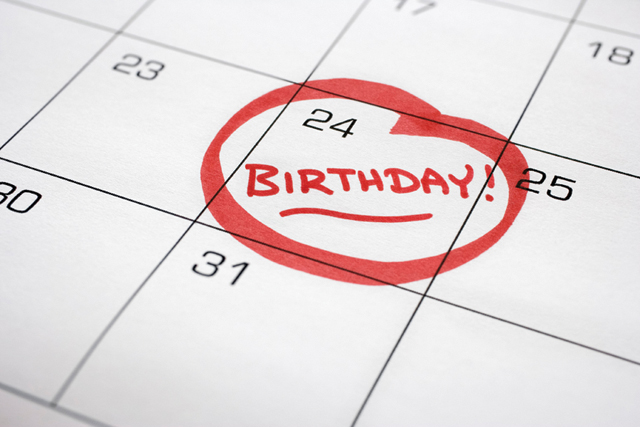
Numerous experiments have shown that visual imagery encoding can substantially improve memory. In one experiment, participants who studied lists of words by creating visual images of them later recalled twice as many items as participants who just mentally repeated the words (Schnorr & Atkinson, 1969). Why does visual imagery encoding work so well? First, visual imagery encoding does some of the same things that semantic encoding does: When you create a visual image, you relate incoming information to knowledge already in memory. For example, a visual image of a parked car might help you create a link to your memory of your first kiss.
Second, when you use visual imagery to encode words and other verbal information, you end up with two different mental placeholders for the items—

 Figure 6.2: Brain Activity during Different Types of Judgments fMRI studies reveal that different parts of the brain are active during different types of judgments: (a) during semantic judgments, the lower left frontal lobe is active; (b) during visual judgments, the occipital lobe is active; and (c) during organizational judgments, the upper left frontal lobe is active.
Figure 6.2: Brain Activity during Different Types of Judgments fMRI studies reveal that different parts of the brain are active during different types of judgments: (a) during semantic judgments, the lower left frontal lobe is active; (b) during visual judgments, the occipital lobe is active; and (c) during organizational judgments, the upper left frontal lobe is active.
6.1.3 Organizational Encoding
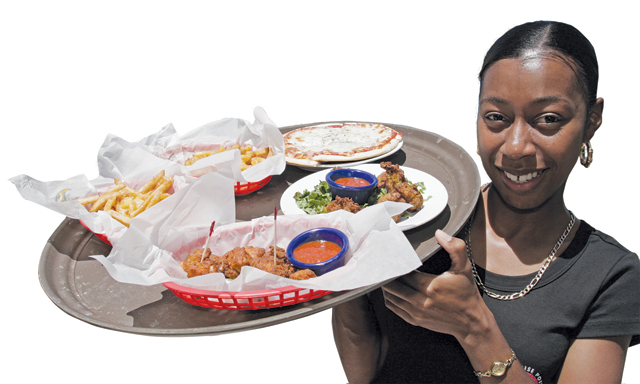
Have you ever ordered dinner with a group of friends and watched in amazement as your server took the order without writing anything down? To find out how this is done, one researcher spent 3 months working in a restaurant where servers routinely wrote down orders but then left the written order at the customer’s table before proceeding to the kitchen and telling the cooks what to make (Stevens, 1988). The researcher wired the servers with microphones and asked them to think aloud, that is, to say what they were thinking as they walked around all day doing their jobs. The researcher found that as soon as the server left a customer’s table, he or she immediately began grouping or categorizing the orders into hot drinks, cold drinks, hot foods, and cold foods. The servers grouped the items into a sequence that matched the layout of the kitchen, first placing drink orders, then hot food orders, and finally cold food orders. The servers remembered their orders by relying on organizational encoding, the process of categorizing information according to the relationships among a series of items.
Why might mentally organizing the material for an exam enhance your retrieval of that material?
For example, suppose you had to memorize the words peach, cow, chair, apple, table, cherry, lion, couch, horse, desk. The task seems difficult, but if you organize the items into three categories—
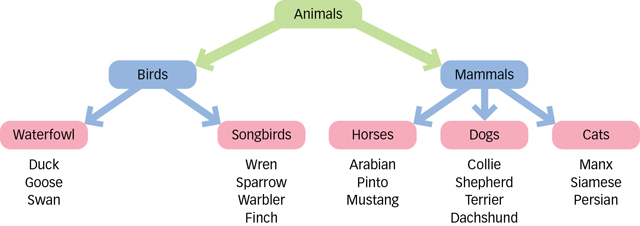
 Figure 6.3: Organizing Words into a Hierarchy Organizing words into conceptual groups and relating them to one another—
Figure 6.3: Organizing Words into a Hierarchy Organizing words into conceptual groups and relating them to one another—Just as semantic and visual imagery encoding activates distinct regions of the brain, so, too, does organizational encoding. As you can see in FIGURE 6.2c (on the previous page), organizational encoding activates the upper surface of the left frontal lobe (Fletcher, Shallice, & Dolan, 1998; Savage et al., 2001). Different types of encoding strategies appear to rely on different areas of brain activation.
6.1.4 Encoding of Survival-Related Information
Encoding new information is critical to many aspects of everyday life—
Recent experiments have addressed these ideas by examining encoding of survival-
To test this idea, the researchers gave participants three different encoding tasks (Nairne, Thompson, & Pandeirada, 2007). In the survival-
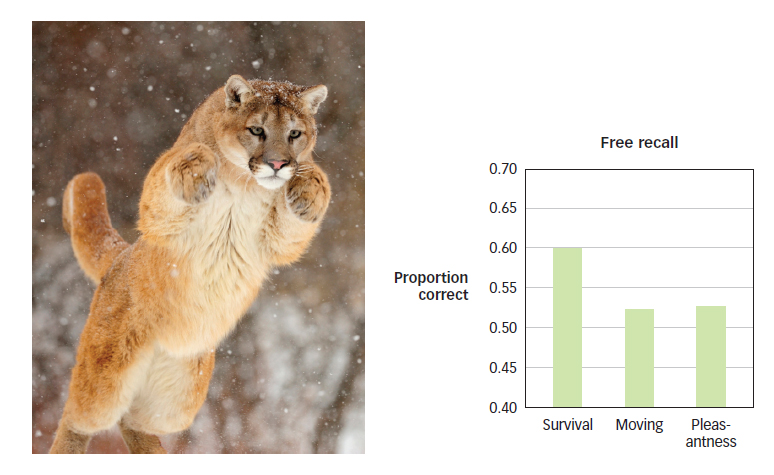
 Figure 6.4: Survival Encoding Enhances Later Recall What does a pouncing cougar that may threaten our survival have to do with recall? People recall more words after survival encoding (Nairne et al., 2007).
Figure 6.4: Survival Encoding Enhances Later Recall What does a pouncing cougar that may threaten our survival have to do with recall? People recall more words after survival encoding (Nairne et al., 2007).
The findings, displayed in FIGURE 6.4, show that participants recalled more words after the survival-
Encoding is the process of transforming into a lasting memory the information our senses take in. Most instances of spectacular memory performance reflect the skillful use of encoding strategies rather than so-
called photographic memory. Memory is influenced by the type of encoding we perform regardless of whether we consciously intend to remember an event or a fact. Semantic encoding, visual imagery encoding, and organizational encoding all increase memory, but they use different parts of the brain to accomplish that task.
Encoding information with respect to its survival value is a particularly effective method for increasing subsequent recall, perhaps because our memory systems have evolved in a way that allows us to remember especially well information that is relevant to our survival.